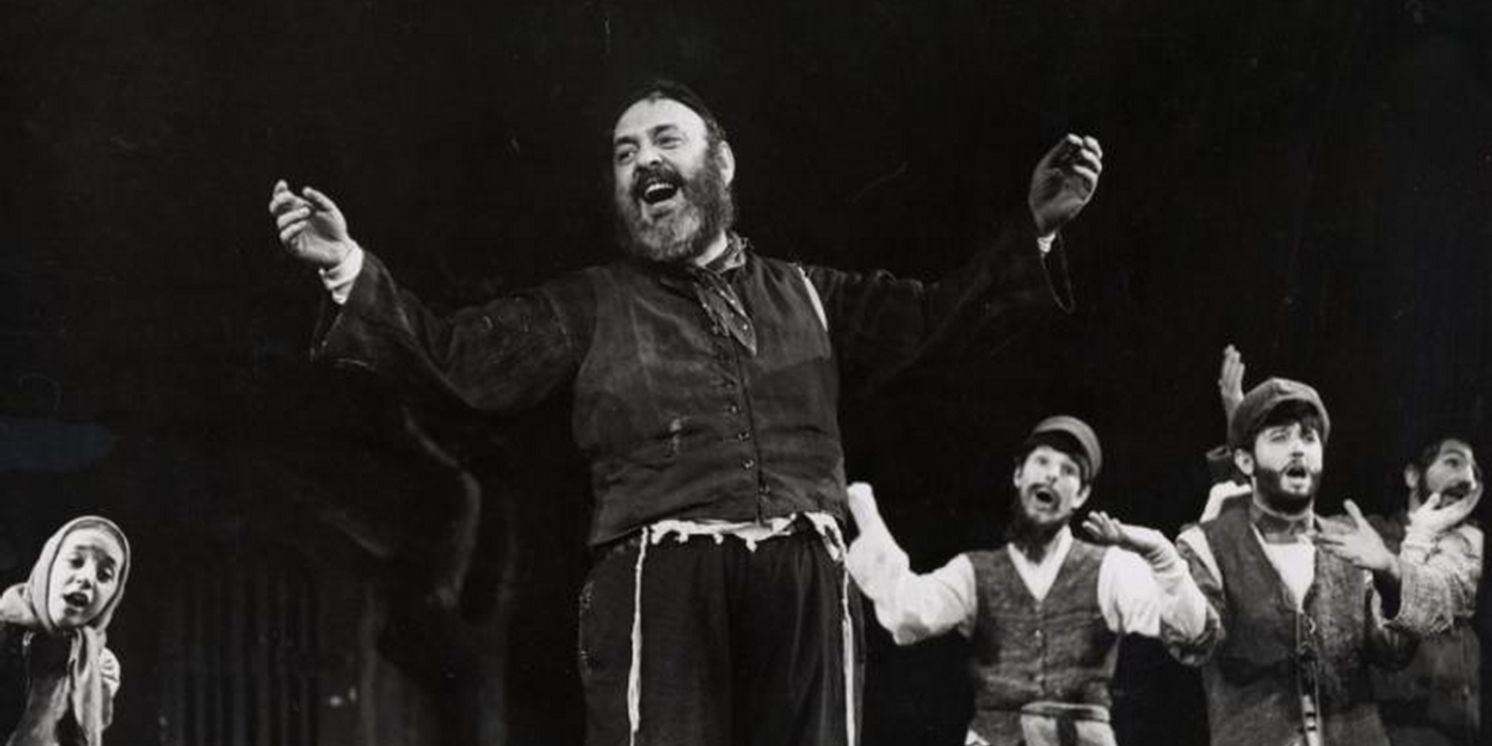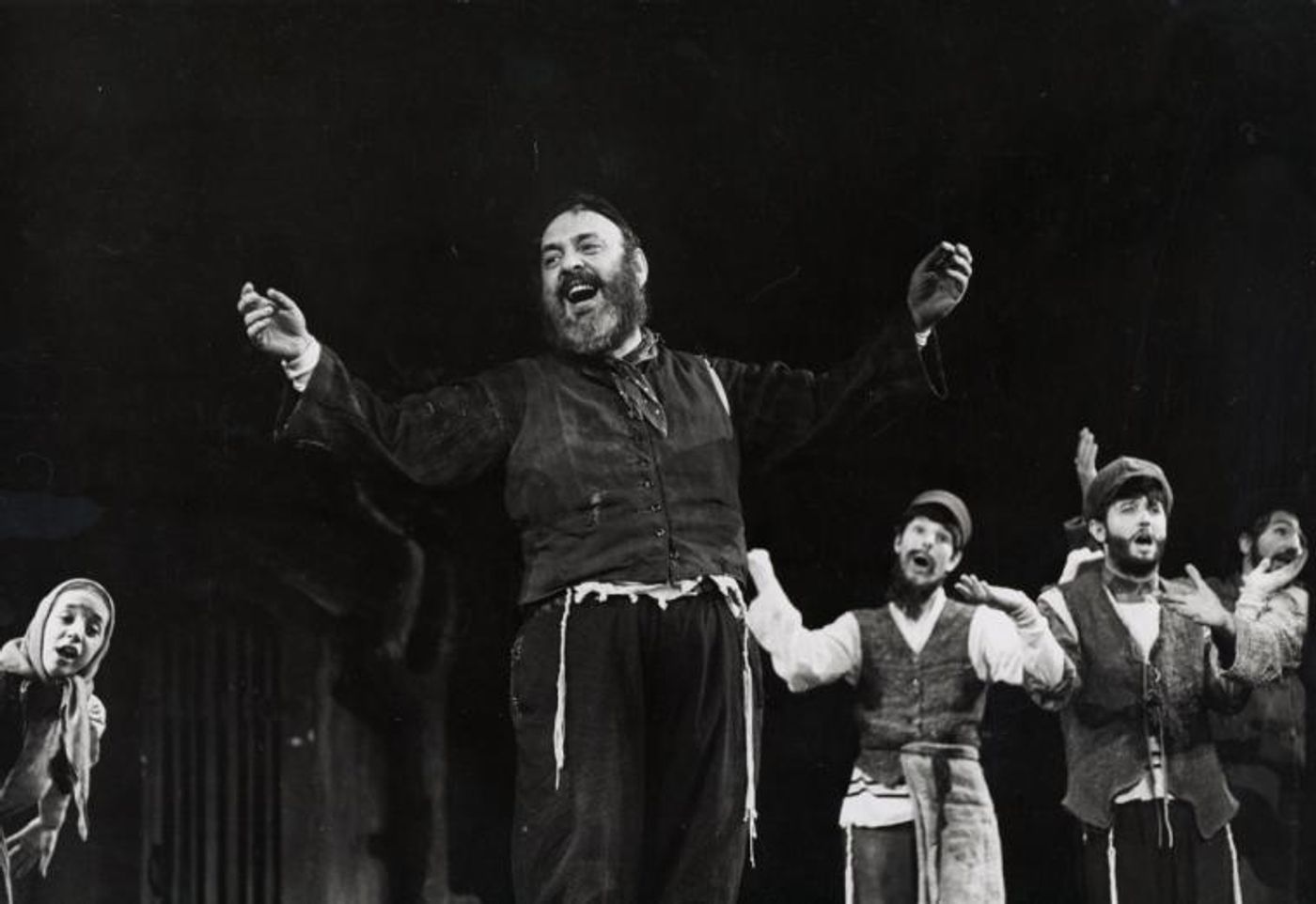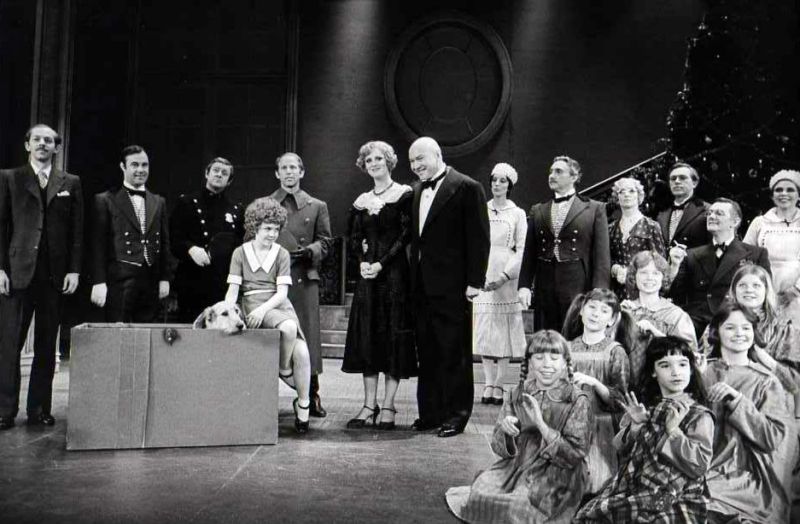Which Shows Had the Biggest Overhaul From Out-of-Town Tryout to Broadway Opening?
Jennifer Ashley Tepper Is answering your questions with Broadway Deep Dive!

Do you have a burning Broadway question? Dying to know more about an obscure Broadway fact? Broadway historian and self-proclaimed theatre nerd Jennifer Ashley Tepper is here to help with her new series, Broadway Deep Dive. Every month, BroadwayWorld will be accepting questions from theatre fans like you. If you're lucky, your question might be selected as the topic of her next column!
Submit your Broadway question in the comments here!
This time, the reader question was: which Broadway shows had the biggest overhaul from their out-of-town tryout to their Broadway opening?
Recently, the legendary Austin Pendleton shared some fascinating stories about the original production of Fiddler on the Roof, as part of a performance at 54 Below. This performance was Backstage Babble Celebrates Tony Awards History, put together by the talented Charles Kirsch, and one highlight of the lineup was Pendleton telling tales of Fiddler on the Roof’s time out of town in Detroit and Washington D.C. in 1964, prior to opening and becoming a smash hit at the Imperial on Broadway.
According to Pendleton, Fiddler’s out of town production received the worst reviews in recent memory when it started out at the gargantuan Fisher Theatre in Detroit. Variety in particular skewered the show, noting that nothing other than Zero Mostel’s performance as Tevye was worth anything—not the music, lyrics, other performances, or anything else. Pendleton remembered that after the reviews came out, the whole company was drowning their sorrows at a nearby bar after the performance, and things were getting wild. “Nothing is more of an aphrodisiac than being out of town with bad reviews.” Because Pendleton had worked with director-choreographer Jerome Robbins before, he had the courage to approach him. Robbins was slowly drinking a martini. Pendleton asked, “What are you going to do?” And Robbins responded, “Ten things every day.”
That’s exactly what happened: Fiddler on the Roof turned into the Fiddler on the Roof we all know and love gradually, one line cut and blocking change at a time. As the original Motel the Tailor, Pendleton had his own solo “Miracle of Miracles” (which he regaled the audience with at 54 Below) written out of town. When the decision was made to give the character of Perchik “Now I Have Everything”, Motel’s original song (with some bumps along the way), Jerry Bock and Sheldon Harnick quickly penned the joyous “Miracle of Miracles” for Motel to sing instead. While other shows that became well-loved hits on Broadway may have experienced more dramatic alterations out of town, Fiddler’s transformation from seemingly-destined-flop tom for a time, the longest running show in Broadway history, was dramatic in its own way. For another take on Fiddler’s busy time out of town, I highly recommend the wonderful book Wonder of Wonders: A Cultural History of Fiddler on the Roof by Alisa Solomon.

Billy Rose Theatre Division, The New York Public Library
And speaking of books that focus on pre-Broadway tryouts, Making It Big: The Diary of a Broadway Musical by Barbara Isenberg is another must-read. Big, by Richard Maltby Jr. and David Shire, was the most anticipated musical of its season. Based on a popular 1988 movie about a kid whose wish to be an adult comes true, Big boasted a lovable, proven plot, and many opportunities for on-stage fun. In addition to the terrific Maltby and Shire, Big’s creative team was filled with established hit makers like director Mike Ockrent, choreographer Susan Stroman and book writer John Weidman. It was with this in mind that a tome was planned, wherein Isenberg would follow the show from its early days to its planned triumph at the jewel of Broadway, the Shubert Theatre. Broadway had other plans, as it often does, and the 1995-1996 season became the era of Rent and Bring in ‘da Noise, Bring in ‘da Funk, two shows that unexpectedly came from off-Broadway and turned into the hits of the year.
Just like Fiddler on the Roof, three decades earlier, Big opened out of town at the Fisher Theatre in Detroit. And just like Fiddler, it received not-so-good reviews, particularly in Variety! Unfortunately, this time, the show at hand did not become the hit of a generation, although it is beloved by many who know it. Isenberg noted in her book that Big had been changed so much between the time reviewers came and a few days later when their reviews came out, that the write-ups were almost about a different show.
Frank Vlastnik, who appeared in the ensemble and also understudied the lead role of Josh Baskin, presented a show-stopping medley of multiple songs written out of town for Big, in mine and Kevin Michael Murphy’s If It Only Even Runs A Minute concert series, which celebrates underappreciated musicals. Head to YouTube and you can see Vlastnik run through all of the numbers that were attempted as the first act closer of Big while it developed out of town, along with the story of what happened along the way. As Vlastnik noted, “There is nothing as cold as Detroit in January, without a first act closer to keep you warm.”
Fiddler on the Roof and Big certainly experienced their fair shares of changes during their pre-Broadway tryouts. As you can imagine, it’s near impossible to quantify which shows had “the biggest overhaul”, but let’s highlight a popular musical that seems like it may have cut more material than both of those shows combined, during its time out of town.
Funny Girl, with book by Isobel Lennart, music by Jule Styne, and Bob Merrill, had prolonged pre-Broadway tryouts in both Boston and Philadelphia, after what was already a long road to fruition as a musical. During its development, Funny Girl went through many potential Fanny Brices before landing on Barbra Streisand, who was only 21 years old when the show opened on Broadway. Actresses from Eydie Gormé to Mary Martin to Carol Burnett were considered, but of course the role of Brice went to the one-and-only Streisand, catapulting her to stardom.
Funny Girl tried out first at the Shubert Theatre in Boston, and then at both the Forrest and Erlanger Theatres in Philadelphia during the winter of 1964. Lennart saw many of her scenes cut completely during this time. The song list for the first preview of the show in Boston lists many songs that were not in the final version of the show, including “A Helluva Group”, “It’s Home”, “Took Me A Little Time”, “Sleep Now, Baby Bunting”, and “What a Helluva Day”. And of course, eventual numbers like “I Want to Be Seen With You Tonight”, “Henry Street”, “Sadie, Sadie”, and “Find Yourself a Man” were nowhere to be seen yet. Act two was almost entirely different, with just a few tentpole songs that remained the same throughout development. According to Variety “two truckloads of scenery” were even edited out, since the parts of the show that utilized them had been scrapped. Several of the changes were because of how Fran Stark, daughter of Brice and Nick Arnstein, wanted her father portrayed in a more sympathetic light. Her husband Ray Stark was Funny Girl’s producer. Director Garson Kanin found that the ups and downs of Funny Girl were so extreme that he was inspired to write a book about his experience on the show. This became a book titled Smash, that later inspired a certain TV show.
Jerome Robbins took over the direction of Funny Girl out of town. Indeed, Robbins was one of the most popular go-to show doctors of the 20th century. On his own Forum, he had completed an overhaul so successful that it is often pointed to as the gold standard for musical theatre revisions. The concept of writing a show’s opening number last, so that the creative team fully knows what the whole piece is about first, is oft looked to, as it led to “Comedy Tonight”, the song that focused Forum and made it the show it became.

One last Broadway mega-hit that could be included on the list of those that experienced pre-Broadway overhauls is Annie. I was very fortunate to have the opportunity to moderate a 40th anniversary reunion panel at BroadwayCon in 2017 that included original Annie team members, Martin Charnin, Charles Strouse, Andrea McArdle, Steve Boockvor, Shelley Bruce, and Mary Jane Houdina. I also conducted a live interview with Tom Meehan at the New York Public Library. From all of these luminaries, I learned much about Annie’s unlikely journey from scrappy new musical at Goodspeed in Connecticut to treasured favorite of Broadway. Annie opened in 1977 at the Alvin Theatre, and soon every girl in America was singing “Tomorrow” along to Andrea McArdle’s rendition on the original cast album.
Even McArdle herself was a change made out of town, as she stepped into the red-headed orphan role, replacing original Annie Kristen Vigard. And Vigard was not the only part of Annie at Goodspeed that was discarded. At one point, a new bit of writing everyone had liked was accidentally thrown out and Strouse and Charnin could not remember it well enough to re-create it. After they went through every garbage can and dumpster in Connecticut, they finally gave up— and decided they had no choice but to write something new. At that moment, the arranger came through with the one saved copy that had not been discarded, which he had located. It was “Easy Street”.

In more recent years, in a relatively rare trajectory, eventual Pulitzer Prize winner Next to Normal had an out-of-town tryout that happened after its promising off-Broadway production, prior to Broadway. The majority of Broadway transfers from off-Broadway runs happen without another production in between, but Next to Normal producer David Stone and his team felt the show needed more time and space to gestate.
During Next to Normal’s development at Arena Stage in Washington D.C., the show was made more emotionally grounded, with several comedic moments excised and characters further developed under the skilled direction of Michael Greif. Next to Normal’s revisions out of town can’t be characterized as a true overhaul, but are worth mentioning here due to the indirect, unique pre-Broadway path the show took, which wound up serving it well. Tom Kitt and Brian Yorkey’s story and score shone when the show eventually opened at the Booth Theatre. Next to Normal is currently making its London debut, 14 years after debuting on Broadway in 2009.
What are your favorite Broadway shows that made major changes prior to Broadway?
Comments
Videos

